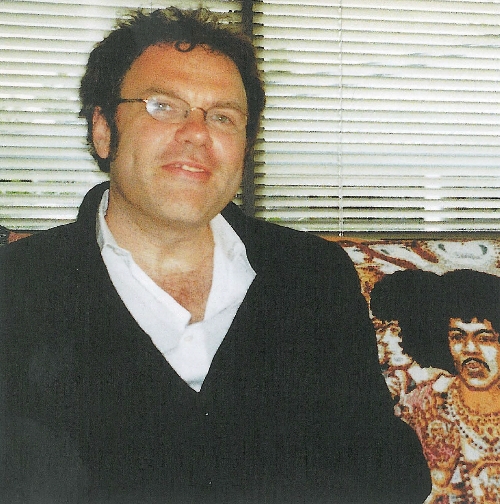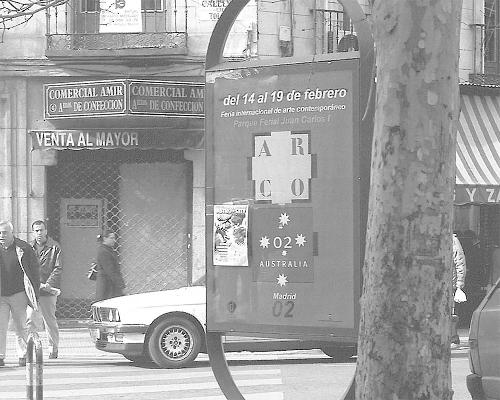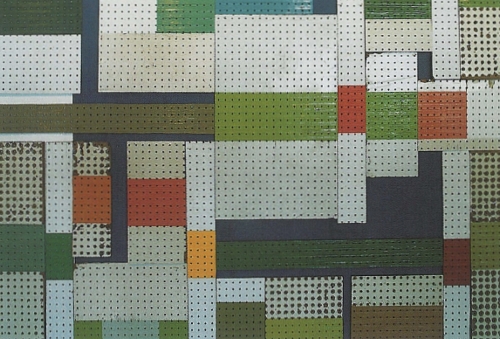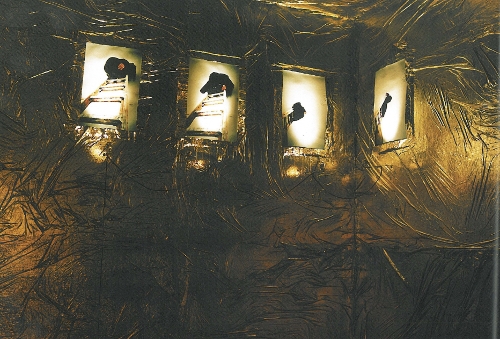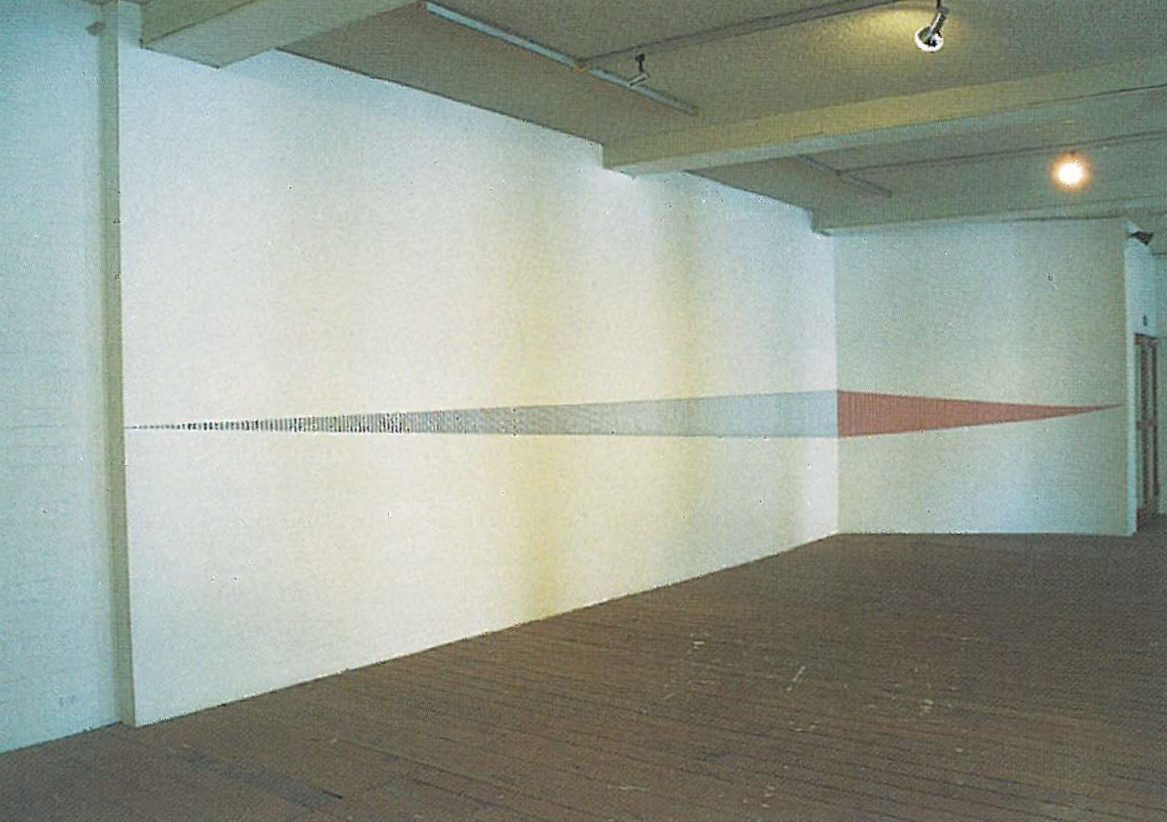
Mutable Spaces, as the catalogue says, 'grew out of a desire to see emerging local artists in a dialogue with their peers from interstate, something that is rarely staged in Brisbane these days.' While successfully achieving this aim, the exhibition itself offers much more than an interstate conversation; it signifies a return to physical engagement with and consideration of the materiality of the art object, manifesting most excitingly in the work of emerging artists both in Brisbane and Melbourne.
Josh Milani, the exhibition curator, brought together works by Brisbane artists Catherine Brown, Gareth Donnelly and Sandra Selig, and three artists from Melbourne, Damiano Bertoli, Nadine Christiansen and Nick Mangan. The 'mutable' spaces suggested by the exhibition's title abridged more than the obvious physical distance between the two groups of artists. In their simplest formal reading, all of the works in the exhibition were in some way engaged with notions of spatiality.
Mangan's A geology for commodification, 2002 appears to be a three-dimensional contour drawing of varying depths and layers. Technically impeccable and installed in a domestic wheelie bin, the work implores the viewer to peer inside. The use of the bin is, as Milani posits in the catalogue, a questioning of the nature of removal and its relationship to form. Similar contour-like spaces have been carved into his Articulated Erosions, 2002, a block of balsa foam, appearing to be the moulding left from a removed delicate machine. His Exploded autocatalytic drawings #7, 8, 9, 2002, are not drawings at all, but pieces of kitsch-looking contact adhesive, in three different wood grain patterns, stuck to paper. These create intertwined spaces that vacillate in and out of the third dimension.
Bertoli's Continuous Moment 1969-2001, was a wall painting depicting a barren sci-fi landscape. Under ultraviolet light, the glowing grid of perspective lines disturbed one's sense of spatiality to such an extent that my hands groped before me, trying to gauge the depth of the room. This sense of entering a low-tech computer game, coupled with the feeling of spatial displacement, suggests an engagement with concepts of technological oversupply and domination over corporeal experience. Bertoli's The Diamond Age, 2002, a giant chandelier made of cardboard and string, was accompanied by a small picture of a dark sky filled with stars. This work renders opaque and ghostlike the warm splendour of light, brass and crystal. The accompanying small crumpled picture of a cosmos prompts questions of perspective and scale, mirroring the grid of the wall painting downstairs.
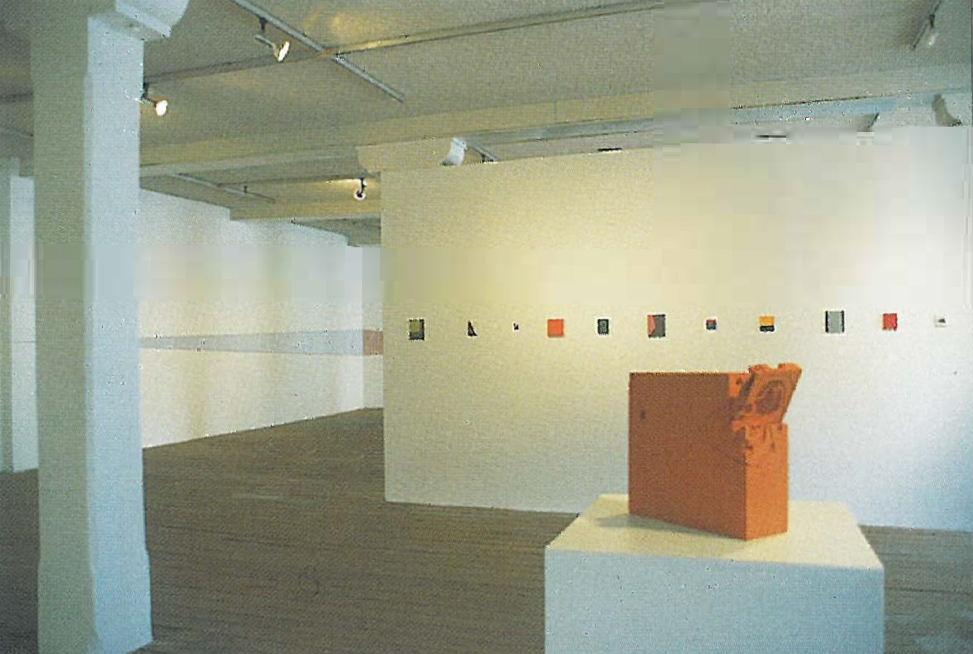
Sustaining our displacement in this architectural space, Selig's sound installation split system, 2002 was installed in the busy stairwell and could only be visually detected by the segment of the top rung of the handrail painted orange, and a line of tiny speakers taped underneath. Not surprisingly, the repetition of soft footsteps on wooden stairs was completely subsumed by the opening night traffic. Examining this work forges a physical relationship with the architectural space and surfaces, turning one's head to experience the sound from both ears at different angles.
Similarly, Brown has long been interested in the physical placement of the viewer. Her Wall drawing with plastic tubing, 2002 used coloured plastic tubing directly nailed in vertical lines to the wall, and unlike her customary meandering circular line, this installation was a sharply angular lozenge, stretched so its widest points met at a corner of the wall. This optically arresting work, caused by light bouncing off the shiny plastic of the tubing caught the eye from viewing positions around the entire gallery.
While Milani's catalogue essay links each artist's work to a relationship with technology, this exhibition is more significant in its postulation of new concerns in contemporary practice. Impeccable finish has been prioritised, and a return to the object itself rather than its ideological baggage is proposed. A familiarity with the rubric of Minimalism is apparent, but to steep these works under such weight would be detrimental. Let us at this stage say that these artists are calling our attention to our surroundings, and to the materials and surfaces that surround us, and we excitedly wait to see how this continues to develop in each of their practices.




